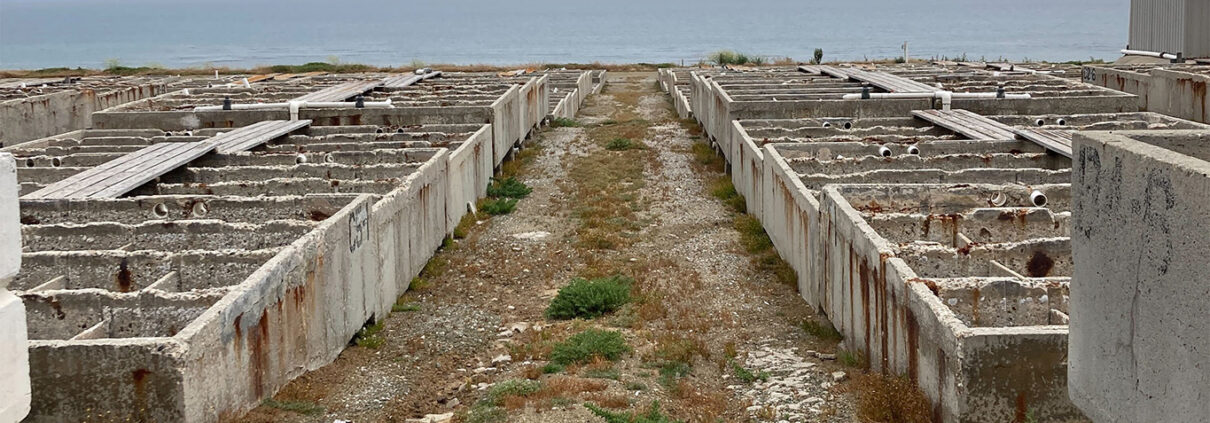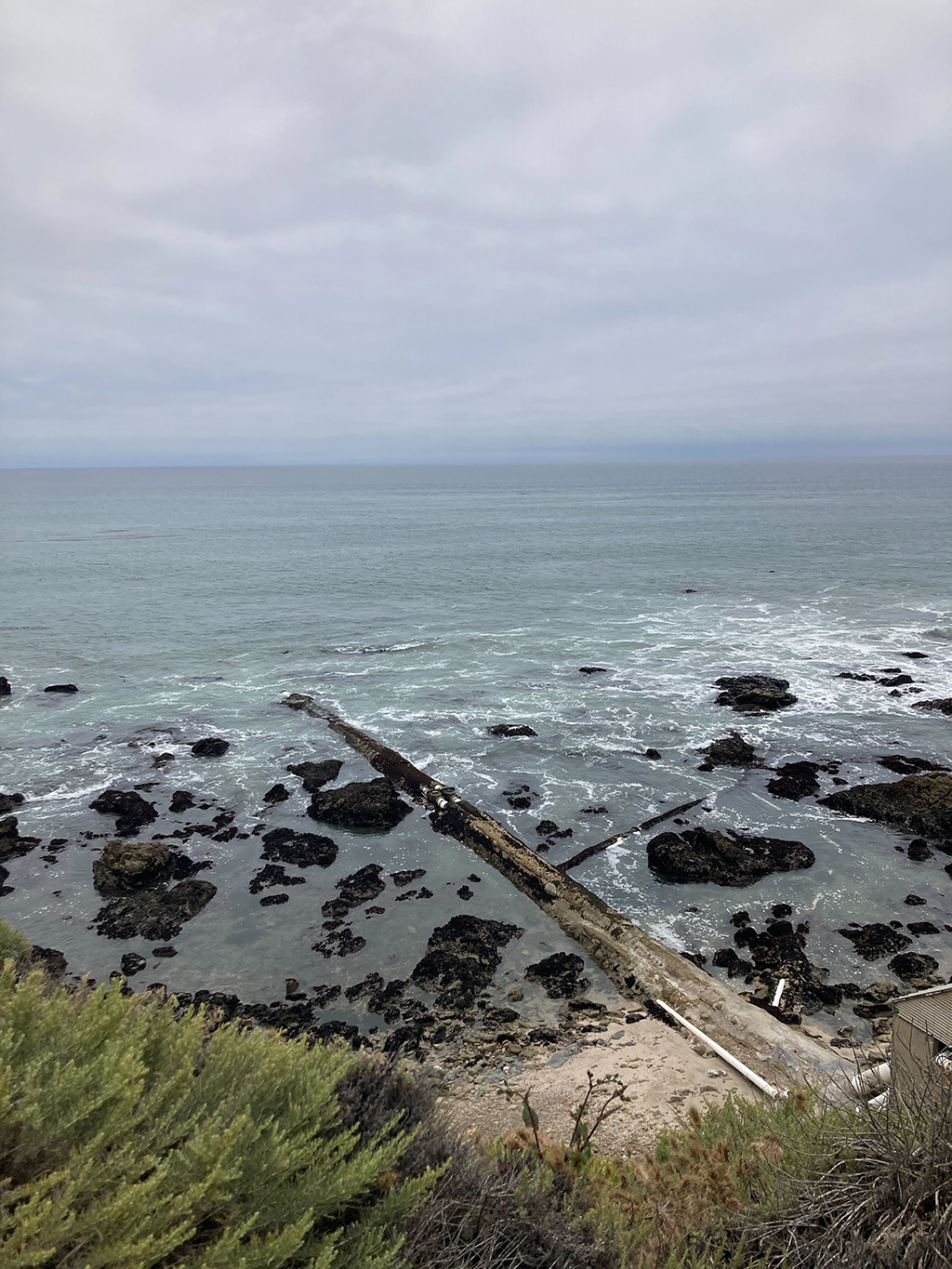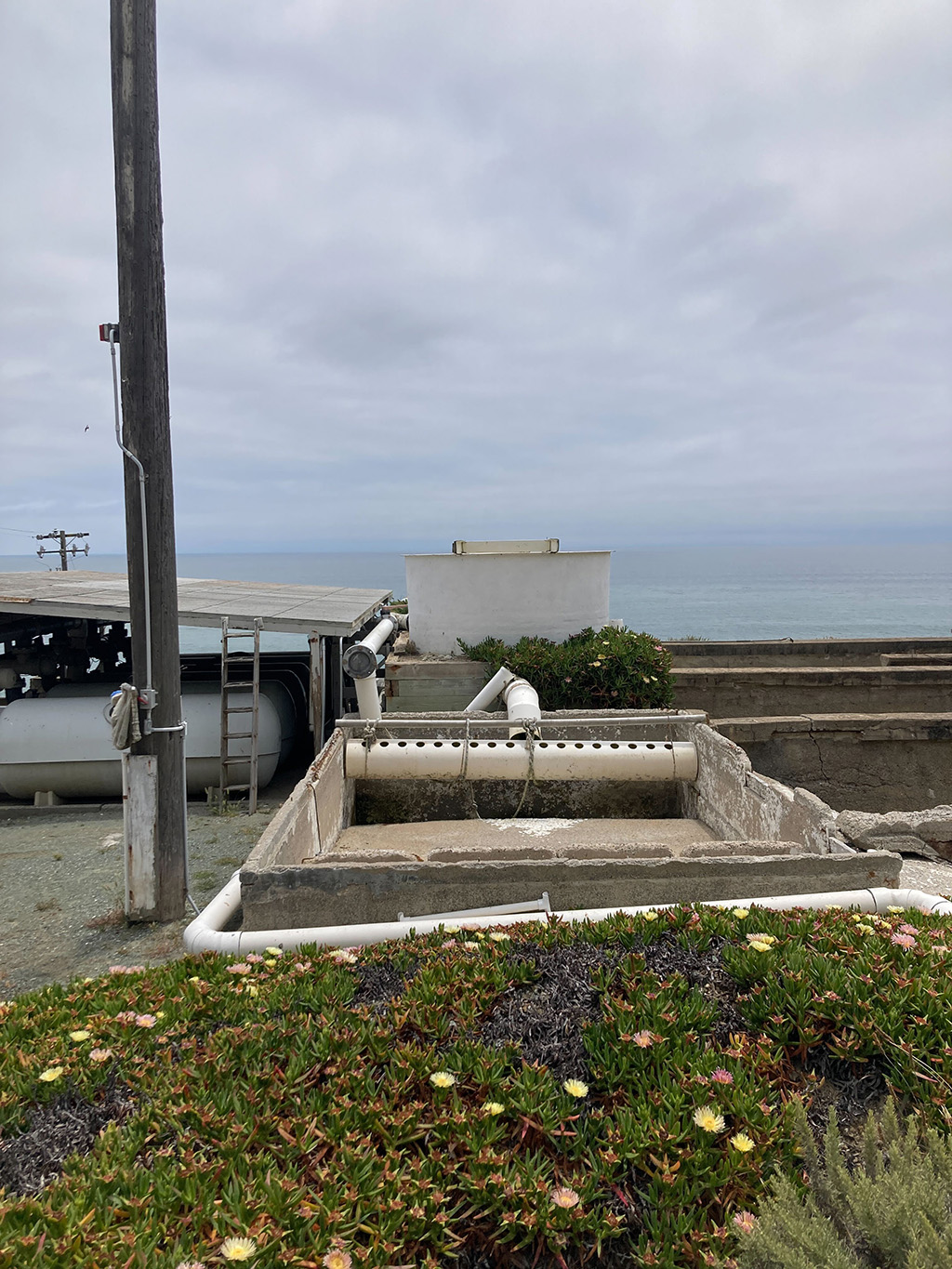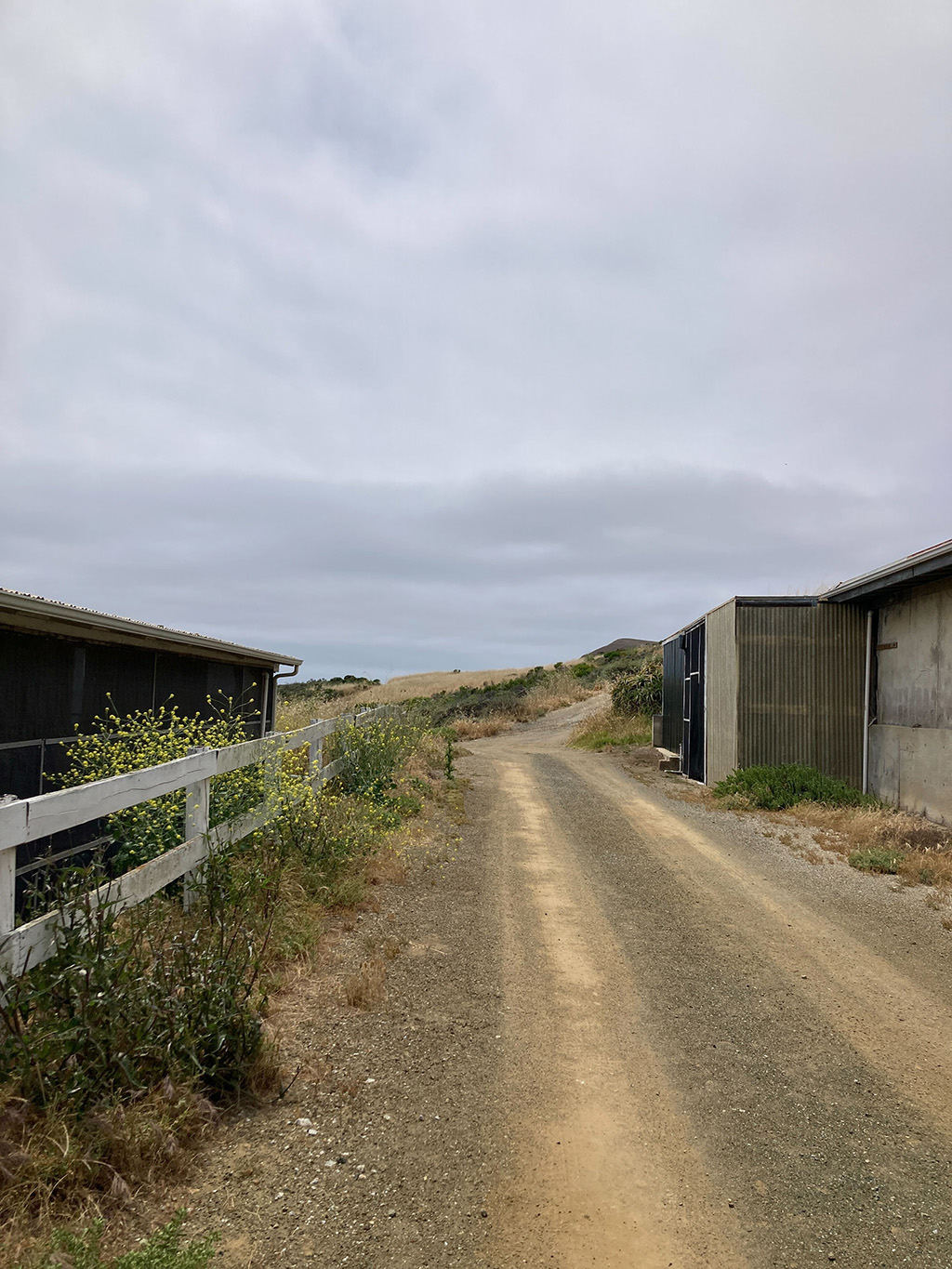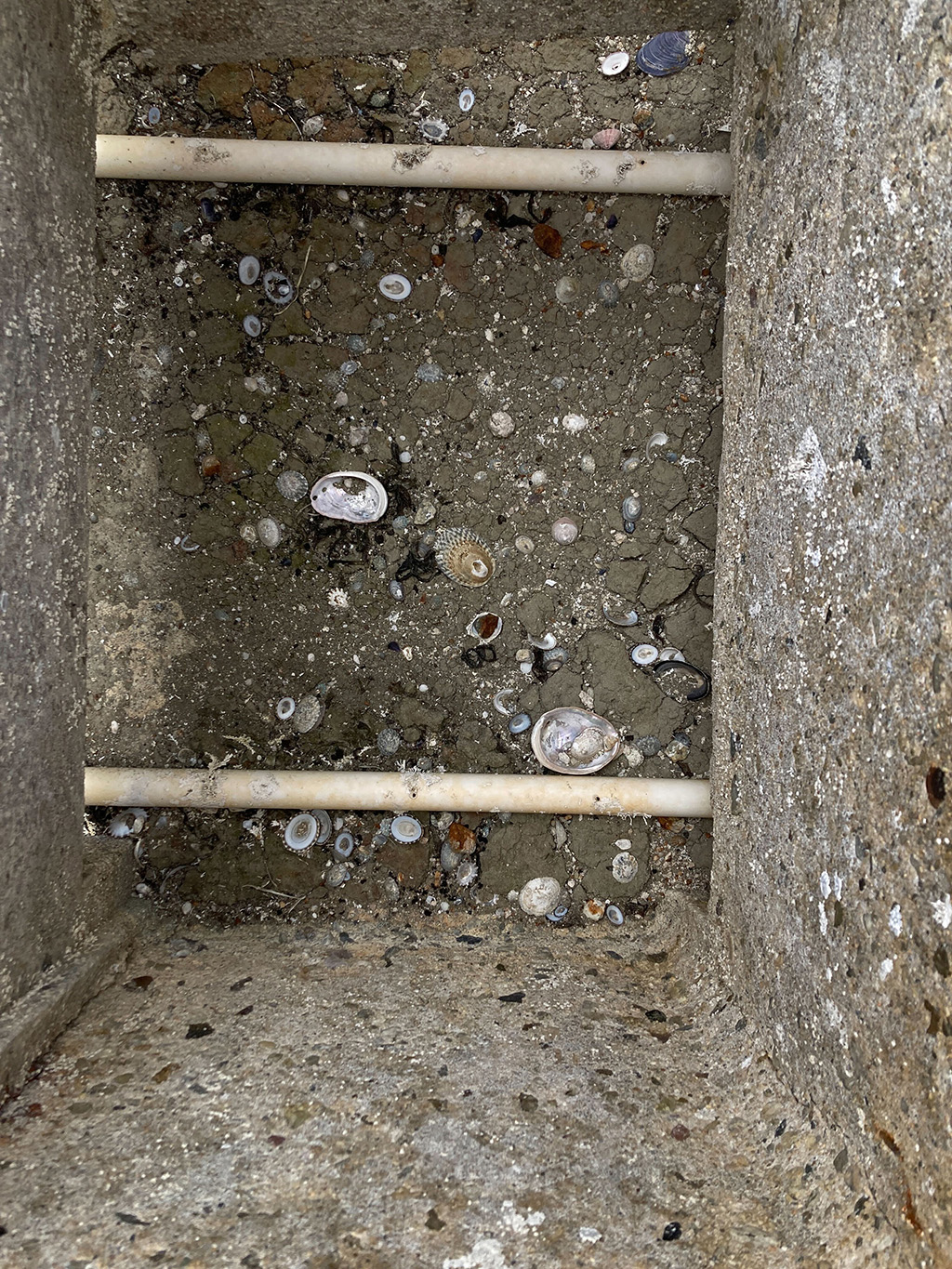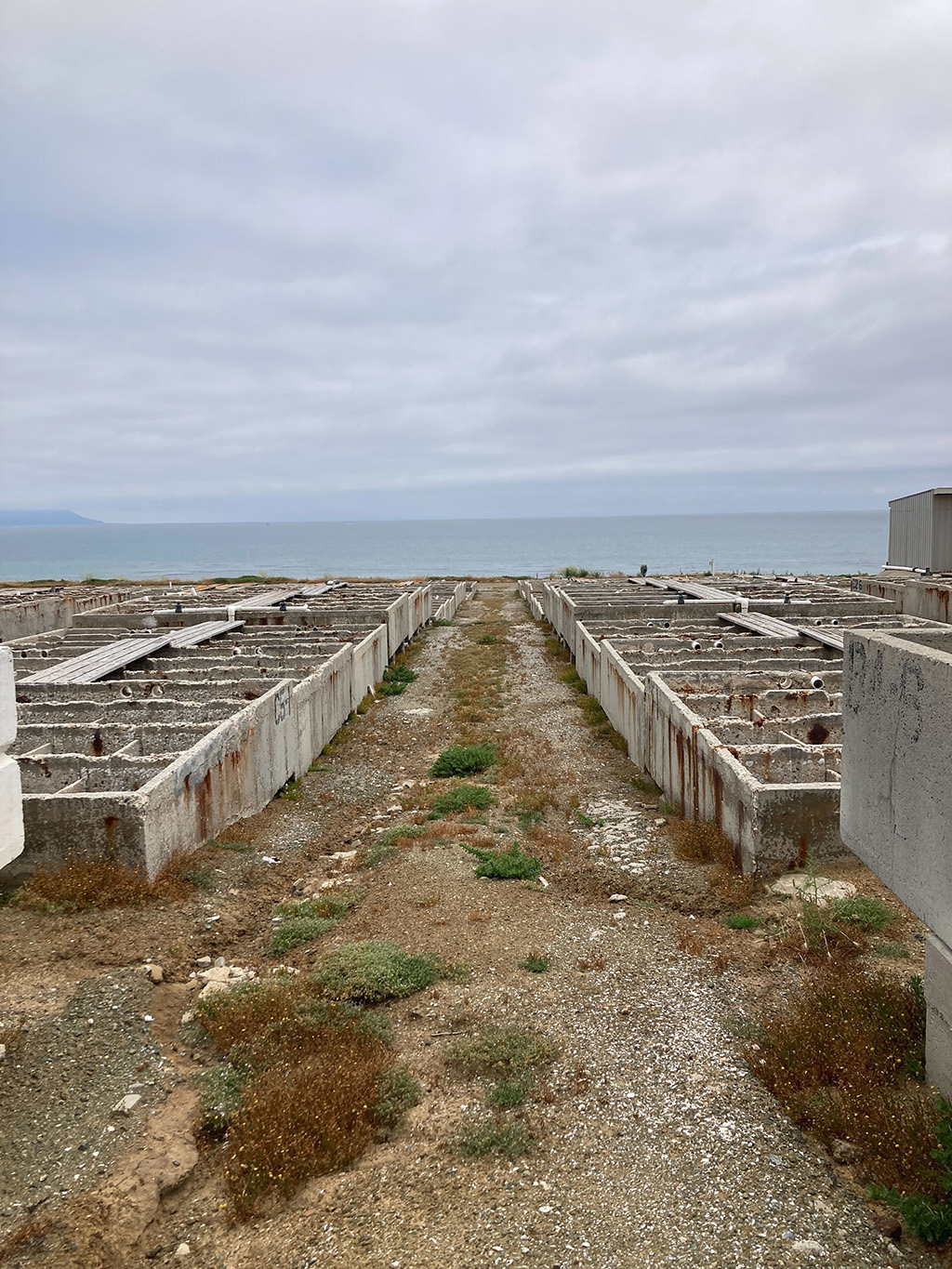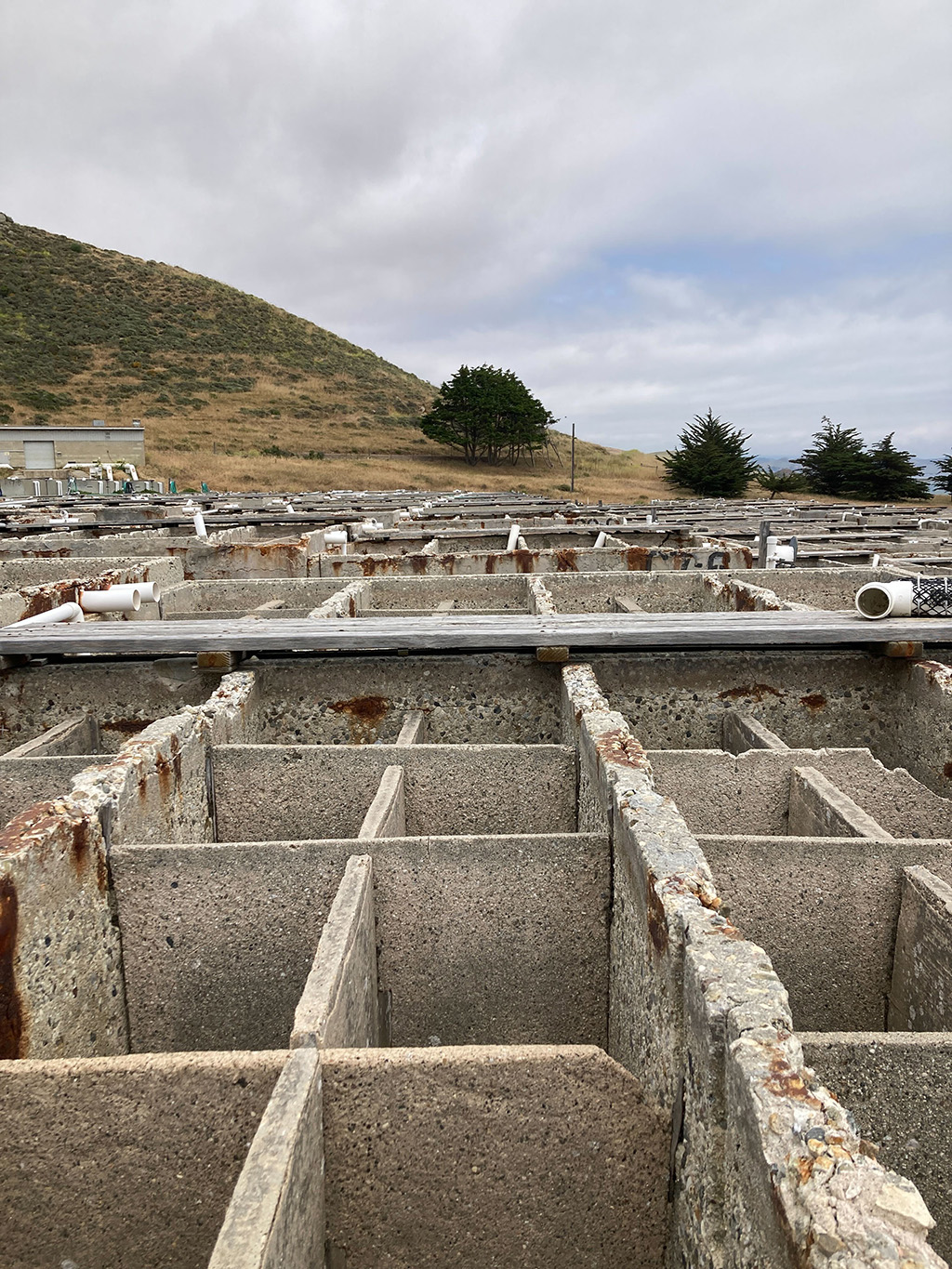My name is Maya Weeks. I’m a marine geographer and California Sea Grant State Fellow at Ocean Science Trust, and I live, work, and get in the water as much as possible on the beautiful Central Coast of California. Growing up surfing here, I always knew there was a local abalone farm, but didn’t know quite what happened there.
While the abalone farm closed in 2019, shellfish farming and other forms of low-trophic level aquaculture continue in California. OST has ongoing projects on sustainable aquaculture, so when I learned that the largest aquaculture facility in the state, the Harmony Coast Aquaculture Institute (HCAI), is slated to be on the site of the old abalone farm, I jumped at the opportunity to join a tour.


